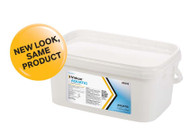Need a Bio Security Plan?
Posted by Syndel on 20th May 2020
To help ensure an airtight program, successful farmers rely on measures developed using Hazard Analysis and Critical Control Point (HACCP) principles. These principles help identify critical control points for biosecurity hazards and are then used to set up internal and external barriers to control acknowledged risks.
Farmers can also systematically choose proper bio security equipment and supplies to help create those barriers. This method allows all activities to be outlined in standard operating procedures (SOP’s) developed and implemented by all farm staff.
In aquaculture, critical control points are areas in the production process that may present or permit biological hazards. Spotting these areas often requires a little foresight and common sense, and sometimes divine enlightenment.
Factors such as compliance, holes in the current biosecurity program, accidents, and the wrath of Mother Nature must always be considered when identifying critical control points and setting up barriers.
Critical control points may include: transferring pathogens on dirty boots or hands, disease spread through predation, movement of fish, eggs, people, or equipment, as well as incoming water supplies.
Once critical control points have been identified, internal and external barriers are put in place to help eliminate hazards. The footbath is probably the most obvious barrier, especially for those going home with soggy feet.
As one could imagine, internal barriers are barriers that are set up to prevent disease or the spread of disease through elements inside the production cycle. These elements include controlling movement of people, fish, and equipment, as well as the disinfection procedures and so on.
Footbaths, hand wash stations, and routine disinfection are popular ways to establish internal barriers. Setting up separate secure areas on the farm and demanding high standards of hygiene may also be ways to develop good biosecurity practices.
On the other hand, external barriers are put in place for those pesky elements outside of the production cycle. These may include treating incoming water supplies, and setting up predator nets. Though it may be difficult to predict all events in nature, it is possible to reduce their potential impacts and sometimes monitor and manipulate typical threats. What about visitors you might ask? Both the internal and external barriers must deal with these seemingly uncontrolled beings. Although many feel they have little or no control over visitors, setting up gates, posting clear signs directing traffic, and requesting appointments are a few ways to manage those unavoidable beasts.
Once critical control points have been identified and internal and external barriers are in place, developing and implementing SOP’s is the next step to biosecurity. So, make policy of the practices that will ensure that all biosecurity measures are understood, performed and documented. This will go a long way to ensuring that your fish are healthy and happy.
SOP’s are often developed to ensure that recirculation pumps are turned off when well boats are downstream from processing plants. They mandate that all individuals must use footbaths and hand-wash stations and they highlight procedures for cleaning and disinfecting tanks. These SOP’s should be clear and laid out step by step to avoid misunderstanding or misinterpretation.
SOP’s may also provide information on how to choose proper biosecurity equipment and supplies. Getting information on efficacy, solution concentration, environmental impact, contact time, and target organisms is often a good place to start. Having this kind of information will make the decision process easier.
Ask your supplier for pertinent information before purchasing. Compare the particular needs for each SOP against the specific features of the product being considered. This logical step-by-step method will almost always ensure you’ve made the right decision.
Developing Standard Operating Procedures is only the beginning. The process of biosecurity is ongoing and never static. SOP’s have to be implemented immediately, followed constantly, reviewed periodically and amended whenever necessary. In order to be effective, biosecurity should be interactive, effective, and practical.
In many cases, the effects of pathogens and disease outbreaks can be avoided with the proper biosecurity program that identifies critical control points and sets up internal and external barriers. So, the next time someone walks away with soggy shoes, they should remember, it’s not a matter of inconvenience; it’s a matter of biosecurity. Besides, if they don’t want to get their loafers soggy, they should leave them at home.

